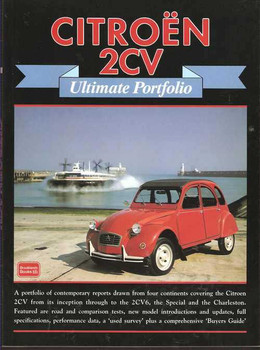Description
Brooklands Portfolio, Compiled by R.M.Clarke, Softbound, 154 Pages, ISBN: 9781855209787, B-ACA53RP
We, at Brooklands Books, have been collecting and indexing international motoring magazines for over 57 years. To celebrate our founder's 80th year it was decided that our legacy would be to share with automobile enthusiasts, historians and owners 'road tests' and other stories that reside in our archives, especially those on the most iconic marques. To this end we have recently released anthologies on Alfa Romeo, Bugatti, Hispano-Suiza, Delahaye, Bristol, Delage and Packard. In 2009 we published AC Cars 1904-2009, one of our larger portfolios, which ran to 428 pages. Two years later, we were asked to enlarge and update the final section of the book, which covered the Cobra years and re-issue it as a separate title. Now, two years further on, we are being encouraged to reissue and update the 1953 to 1961 period covering the Ace, Aceca and Greyhound years.
As only 1,129 of these cars were built in total these reference portfolios are of necessity, produced in small numbers and their existence is only possible because of the understanding and generosity of the original publishers of the articles that we reprint here. In compiling this particular book we have drawn on copyright stories which first appeared in: Autocar, Autocourse, Automobile, Autosport, Car and Driver, Classic and Sports Car, Classic Cars, Light Car, Modern Motor, Motor, Motor Racing, Motor Sport, Motor Trend, Octane, Road & Track, Sports Car Graphic and Sports Car Illustrated. To the writers, photographers and managements of these magazines we extend our grateful and on-going thanks. Our gratitude also goes to John Spencer, the AC Owners' Club* archivist, for his help and for penning the knowledgeable introduction which follows covering AC's activity over these years.
R.M. Clarke
If the first post WW2 car the Two-Litre, introduced in 1947, had been a conservative choice, the next AC model was anything but. John Tojeiro had acquired a reputation for making fine-handling sports—racing cars. Vin Davison demonstrated his Lea-Francis engined Tojeiro at Thames Ditton, and the Hurlocks, AC's owners, took on both Davison and his car. With the car tidied up considerably, the trusty AC 6-cyl engine installed, and a second chassis built to display the sturdy tubular ladder-frame chassis and all-independent suspension, the AC Ace was presented to a surprised public at the 1953 London Motor Show.
By the spring of 1954 the production prototype was on the road, and by May the first customer cars were delivered. Aces were soon appearing in competitive events, with the redoubtable Ken Rudd amongst those enjoying an 'Indian Summer'. Then in October AC brought further delight for their aficionados with the announcement of the Aceca, essentially the Ace underpinnings with a beautifully sculptured light alloy coupe body.
By 1955, with their fine handling and light weight, the new models were making their mark at all levels in racing, rallying, and hill climbing. These included, with Aces, a Class win for John Gott in the 1955 Tulip Rally, and Hap Dressel's fine performance at Sebring in 1956. John Weller's 1919 light-six was having a great finale, but was beginning to reach its limits and, with Ken Rudd's influence very evident, the Bristol engine was offered as an option. Over the next 5 years this brought a string of Class wins in the world's premiere World Sports Car Championship events and International rallies. At National level the Ace-Bristol enjoyed total domination, winning its Class in Sports Car Club of America Championships for 5 years to 1961.
With Two-Litre production tailing off by the mid 1950s, AC came under some pressure to produce a new 4-seater. When the prototype Greyhound was shown to the public in 1959, reaction was mixed. After the fine lines of the Aceca the styling was not well received. Nevertheless, AC reacted quickly, with the prototype soon altered. Within a year a heavily revised chassis and body style had been finalised and the car was in production. Most of the cars had Bristol engines fitted and, 43 years after its announcement, 6 were blessed with the last production versions of John Weller's light-six, by then producing 102bhp.
In 1961 supplies of the Bristol engine were becoming more difficult and the AC light-six engine had reached the limit of its potential. Since the late 1940s AC had been working on completely new designs of boxer engine, and had run extensive road trials of both flat-4 and flat-6 units. Reputedly, enquiries had also been made about the availability of both the Daimler and Buick (later Rover) V-8 engines, to no avail. In the early 1960s, the one-off AC Drophead MA 200 prototype was run with a US Ford 289 V-8 engine.
Again, Ken Rudd came up with the immediate answer, this time a Ford Zephyr 2.6 6-cyl engine. Soon the Ace and Aceca were offered with this unit, the Ace with a re-styled nose allowed by the reduced engine height. One Greyhound was also so fitted experimentally. Levels of tuning ranged from standard Ford to Raymond Mays light alloy 12-port heads with 3 twin-choke Weber carburettors. Production looked set to continue for some time, until a Texan with other ideas knocked on the door.
John Spencer




















